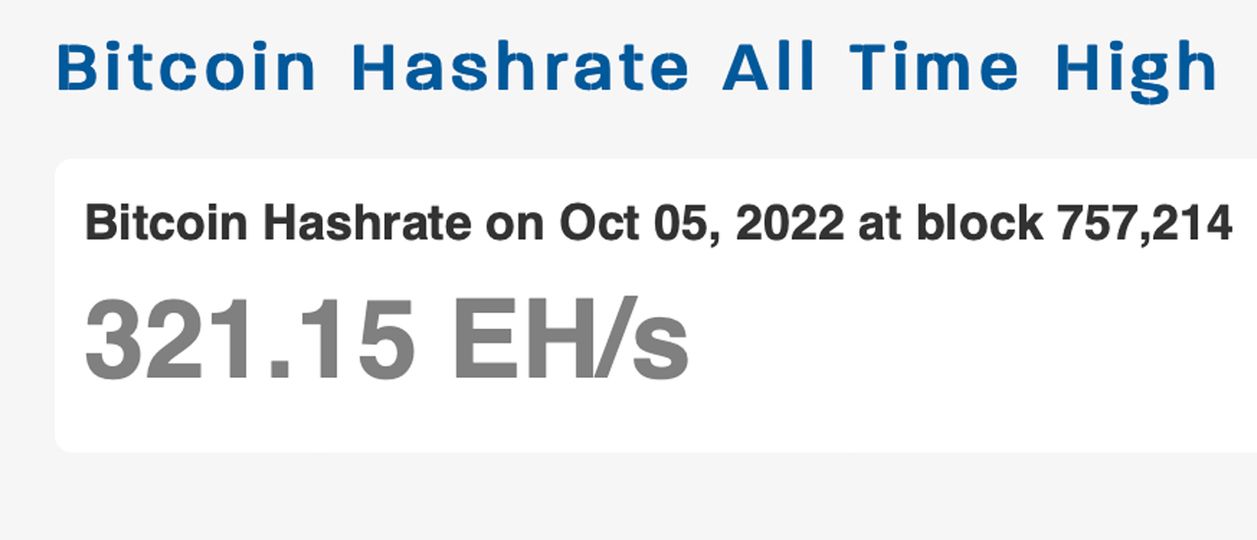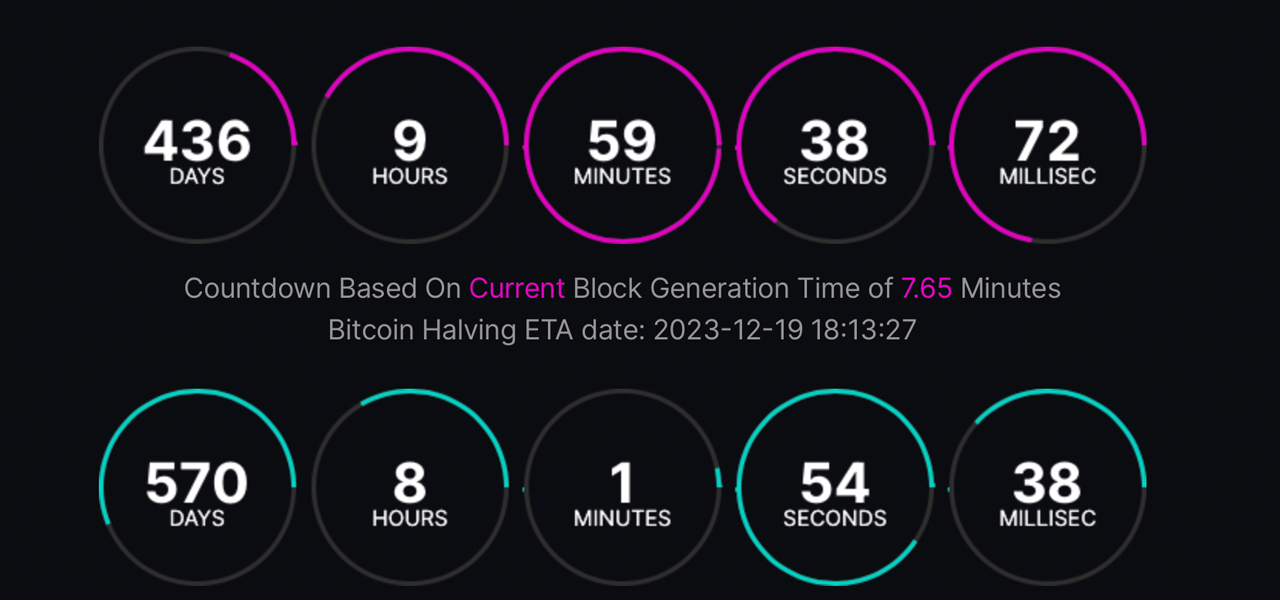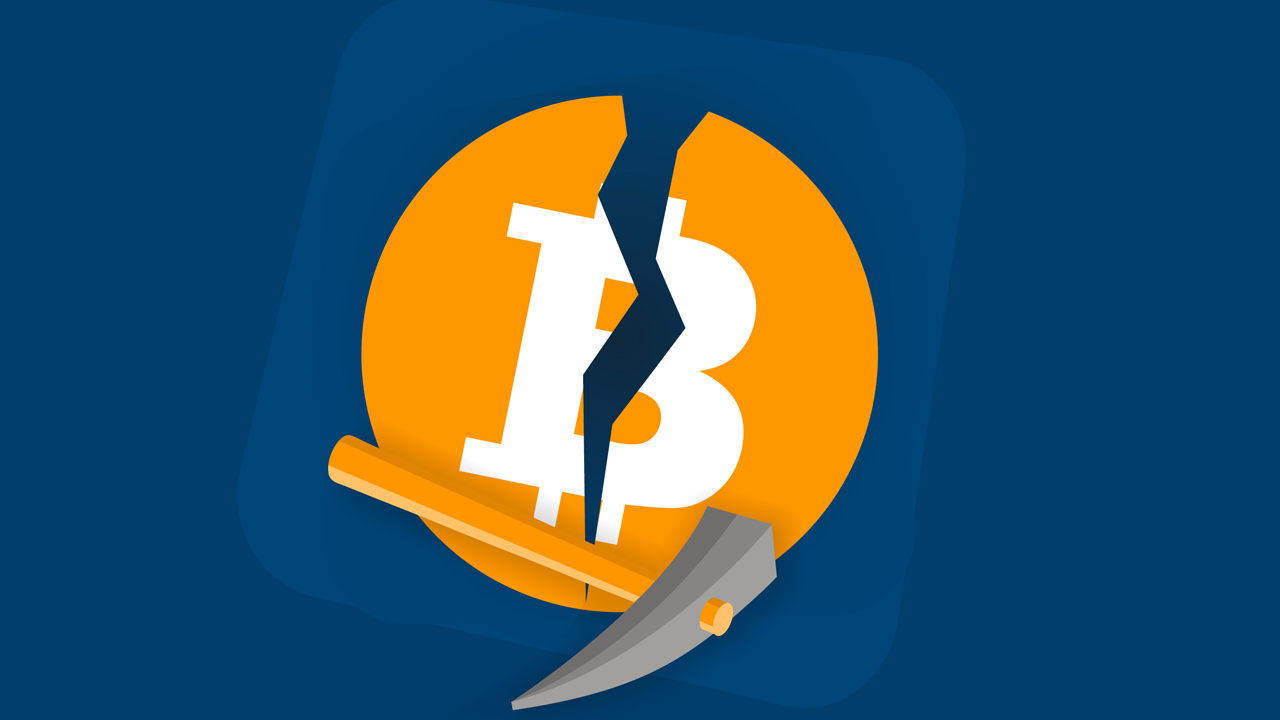According to countdown statistics based on the average block generation time of around ten minutes, progress toward the next Bitcoin block reward halving has surpassed 60%. However, while most halving countdown clocks leverage the ten-minute average, the countdown leveraging the most current block intervals of around 7:65 minutes shows the halving could occur in 2023.
Faster Block Intervals Suggest Bitcoin Halving Could Happen in 2023
Just recently, at block height 757,214, mined on October 5, 2022, Bitcoin’s total hashrate tapped an all-time high (ATH) at 321.15 exahash per second (EH/s). Lately, block intervals have been faster than usual and well under the ten-minute average.

The speed at which the 2,016 blocks are found in between difficulty adjustments determines the difficulty and current block intervals suggest a large difficulty jump is in the cards. Now, prior to the next difficulty rise, the hashrate has continued to remain strong and block times at the time of writing are around 7:65 minutes.
 Since October 7, 2022, the Bitcoin network has progressed more than 60% closer to the next reward halving.
Since October 7, 2022, the Bitcoin network has progressed more than 60% closer to the next reward halving.
The next mining difficulty retarget is scheduled to happen on or around October 10, 2022. If block times remain faster than usual even after the retarget, the protocol’s block reward halving could very well happen in 2023. Statistics from bitcoinsensus.com indicate that at 7:65 minutes per block interval, the halving could take place on or around December 19, 2023.
Bitcoinsensus.com further shows the halving time based on the average ten-minute rule which shows the halving will occur on May 1, 2024. Most countdown calculators apply the average ten-minute rule, and other data points suggest the halving could occur on April 20, 2024.
 Source: bitcoinsensus.com – Screenshot taken on Sunday, October 9, 2022.
Source: bitcoinsensus.com – Screenshot taken on Sunday, October 9, 2022.
Either way, the progress toward the next halving is still more than 60% complete, and when it occurs, bitcoin miner rewards will be reduced from 6.25 BTC to 3.125 BTC post halving. Despite the high speed now, miners could easily slow down after the meaningful difficulty increase on October 10 is recorded and if BTC prices remain low.
This, in turn, would push the halving date back to the 2024 range and after all, there’s still well over a year’s worth of BTC block subsidies to mine. A lot can change. According to a recent blog post from Blocksbridge Consulting, the difficulty change and low price range could give bitcoin miners a headache from loss of profits.
“Bitcoin’s daily mining revenue per PH/s is currently around $80. If the difficulty rises 13% on Monday and bitcoin’s price stays at $19.5K, the daily revenue would decrease to $70 per (petahash) PH/s,” Blocksbridge Consulting’s Miner Weekly issue #17 notes. “That would cause mining companies to mine at all-time low revenues on a daily basis, even lower than what we saw during the summer following the May 2020 halving.”
The blog post adds:
Unless bitcoin’s price breaks the $20,000 barrier, those who employ older-generation machines or have bloated mining operations will face an even tougher time ahead.
 Eight different blockchains are expecting reward reductions or reward halvings. Networks include DASH, BCH, LTC, BSV, ETC, BTC, ZEN, and ZEC.
Eight different blockchains are expecting reward reductions or reward halvings. Networks include DASH, BCH, LTC, BSV, ETC, BTC, ZEN, and ZEC.
Viabtc’s Viawallet halving metrics show that eight blockchains are expected to see reward halvings or what’s known as “reward reductions.” Dash expects a reward reduction on June 20, 2023, as rewards will shrink from 2.76 DASH to 2.56 DASH. Other reduction events and reward halvings will stem from blockchains that include BCH, BSV, LTC, ETC, ZEC, and ZEN.
Tags in this story
$20K region, 2024, 3.125 BTC, 6.25 BTC, Bitcoin, Bitcoin (BTC), Bitcoin Miners, Bitcoin mining, bitcoin mining machines, block times, Blocksbridge Consulting, BTC Mining, December 2023, difficulty, difficulty change, halving date, Hashrate, low revenues, Miner Weekly issue #17, mining, Older Machines
What do you think about the Bitcoin network’s progress toward the next halving exceeding 60%? Let us know what you think about this subject in the comments section below.
![]()
Jamie Redman
Image Credits: Shutterstock, Pixabay, Wiki Commons
Disclaimer: This article is for informational purposes only. It is not a direct offer or solicitation of an offer to buy or sell, or a recommendation or endorsement of any products, services, or companies. Bitcoin.com does not provide investment, tax, legal, or accounting advice. Neither the company nor the author is responsible, directly or indirectly, for any damage or loss caused or alleged to be caused by or in connection with the use of or reliance on any content, goods or services mentioned in this article.



